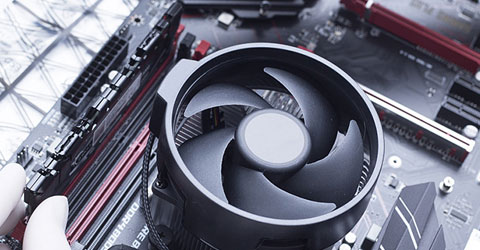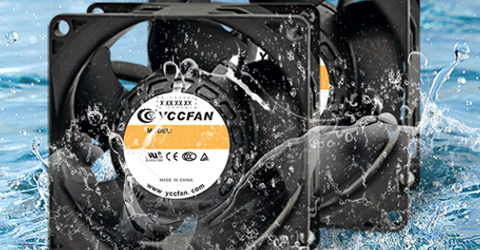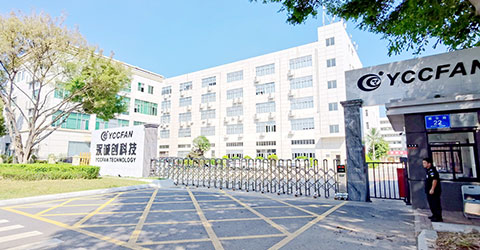What Is A Server Fan?
In today’s digital landscape, servers are the backbone of nearly every organization, powering everything from cloud services and data centers to high-performance computing and industrial systems. With servers operating continuously and handling massive workloads, heat management becomes a critical concern. Overheating can compromise performance, reduce hardware lifespan, and even lead to unexpected downtime. This is where server fans come into play. Far beyond simple cooling devices, they are precision-engineered components that ensure servers operate efficiently, reliably, and safely around the clock.
In this article, we’ll explore what server fans are, how they work, why they are important, their benefits, and the wide range of applications where they make a difference.
What Is A Server Fan?
If you’ve ever worked around servers, you’ve likely noticed how quickly they heat up when handling demanding workloads. A server fan is a specialized cooling device designed to manage this heat, keeping your server’s components—like CPUs, GPUs, memory, and storage—within safe operating temperatures. Since servers operate continuously and process massive amounts of data, heat buildup is inevitable. Without effective cooling, this can lead to slower performance, unexpected shutdowns, or even long-term damage to your hardware.
Unlike standard desktop fans, server fans are engineered for high-speed, high-volume airflow. They are strategically positioned within the server chassis to create a controlled airflow path, drawing cooler air in and expelling hot air out efficiently. This targeted airflow ensures that critical components remain at optimal temperatures, even under heavy loads, allowing your servers to maintain consistent performance day and night.
In essence, server fans are far more than simple attachments—they are vital protectors of your hardware, helping your servers run reliably while extending their lifespan.
How Server Cooling Fans Work
At their core, server fans operate on the principle of controlled airflow. They pull cooler air into the server chassis and push heated air out, creating a constant circulation that effectively removes heat from critical components. This regulated airflow is crucial for keeping CPUs, GPUs, memory modules, and other hardware functioning safely, even during continuous, high-intensity workloads.
Key characteristics of server cooling fan operation include:
High-volume airflow – Unlike standard desktop fans, server fans are designed to move significantly more air. This ensures that even densely packed components receive consistent cooling, avoiding hotspots that could impair performance or shorten the life of your hardware.
Dynamic speed regulation – Many server fans automatically adjust their speed in response to real-time temperature data from sensors on vital components. This targeted airflow delivers cooling exactly where it’s needed, enhancing efficiency while minimizing unnecessary energy use.
Redundant design for reliability – Servers typically employ multiple fans in a coordinated layout. If one fan fails, the remaining units continue to circulate air, maintaining system stability and preventing overheating.
In essence, server fans are not merely air movers—they are precision-engineered cooling systems. They protect your hardware, sustain consistent performance, and enable servers to operate reliably around the clock, even under the most demanding workloads.

Why Server Fans Are Important
Prevent Overheating
Servers run intensive workloads that generate considerable heat in components .Without efficient cooling, this heat can compromise circuits, cause data errors, and even damage hardware permanently. Industrial cooling fans manage internal temperatures by drawing in cooler air and expelling hot air, keeping all critical components within safe operating limits. This targeted cooling not only protects the hardware but also ensures reliable performance under sustained workloads.
Maintain Stability
Excessive heat can trigger thermal throttling, forcing processors to slow down to prevent damage. This can lead to inconsistent performance, latency spikes, or slow response times during high-demand operations. By maintaining continuous airflow and regulating temperature, server fans help preserve stable operating conditions. This stability is especially important in data centers and cloud environments, where even brief performance drops can affect multiple systems and users simultaneously.
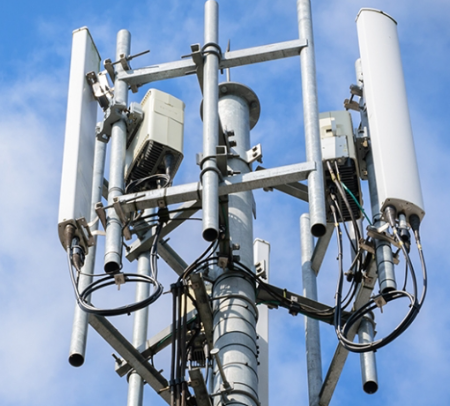
Prolong Hardware Lifespan
High temperatures accelerate component wear, stressing circuits, solder joints, and memory modules. Over time, this can shorten the lifespan of critical hardware. By keeping temperatures under control, server fans reduce thermal stress, allowing components to operate efficiently over a longer period. This not only minimizes repair and replacement costs but also enhances overall system reliability.
Minimize Downtime
Overheating can lead to unexpected shutdowns or crashes, disrupting business operations and causing potential financial losses. In mission-critical environments—such as online services, financial systems, or enterprise IT infrastructures—even short interruptions can have major consequences. Effective server cooling ensures servers remain online, reduces the risk of downtime, and supports uninterrupted service delivery.
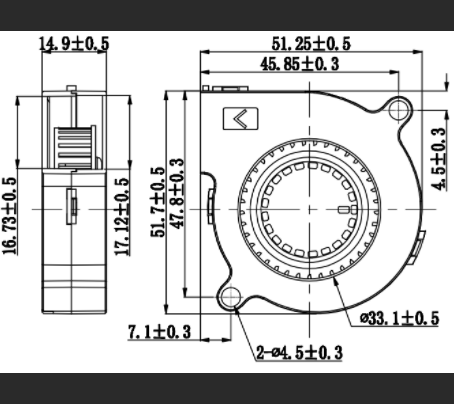
Benefits of Using Server Industrial Cooling Fan
Efficient Heat Dissipation
Server cooling fans are specifically designed to generate strong, targeted airflow that rapidly removes heat from critical components, including CPUs, GPUs, and memory modules. By preventing localized hotspots, they help maintain optimal operating temperatures even under heavy workloads. This consistent thermal regulation not only protects the hardware but also ensures that servers can deliver peak performance without interruptions caused by overheating.
Improved System Reliability
Stable internal temperatures play a direct role in system reliability. When servers operate within safe thermal limits, the likelihood of hardware failures, unexpected shutdowns, or performance throttling decreases significantly. This reliability is essential for environments that require continuous operation, such as data centers, enterprise networks, and cloud services, where downtime or inconsistencies can have wide-reaching consequences.
Cost-Effective Maintenance
Investing in high-quality server cooling fans can reduce long-term maintenance costs. Proper cooling minimizes wear and tear on components, lowering the risk of heat-related failures that would necessitate expensive repairs or replacements. Over time, this proactive approach reduces operational expenses and helps extend the overall lifecycle of server infrastructure.
Energy Efficiency
Modern server fans are engineered to provide maximum cooling while consuming minimal energy. Many include adaptive speed controls that respond to real-time temperature data, adjusting airflow only as needed. This not only reduces electricity consumption but also limits noise levels and improves the overall energy efficiency of the server environment.
Scalability
Server cooling fans offer flexibility for growing infrastructures. Additional fans can be integrated into existing setups or adjusted to accommodate higher-density server racks without the need for major redesigns. This scalability makes them ideal for expanding data centers, high-performance computing clusters, or any environment where workloads and hardware demands increase over time.
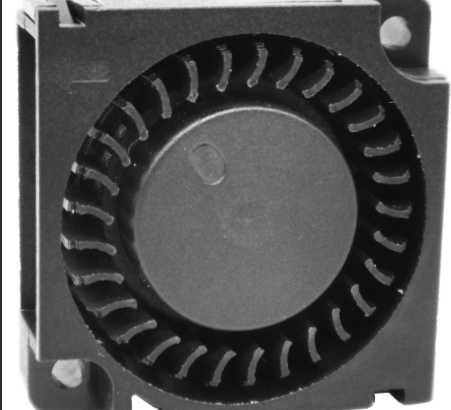
Server Cooling Fans Applications
Data Centers & Server Rooms
In data centers and server rooms, industrial cooling fan is critical to maintaining continuous operation. Server fans ensure that racks of servers and storage arrays remain within safe temperature ranges, preventing performance drops and extending hardware longevity. Reliable cooling is a cornerstone of uptime and operational efficiency in these high-demand environments.
Telecommunication Equipment
Telecom infrastructure, including routers, switches, and base stations, relies on stable thermal management to operate without interruptions. Server fans help prevent overheating in these systems, ensuring uninterrupted data transmission and network reliability, which is vital for service providers and end-users alike.

Industrial Computing
Servers used in manufacturing, automation, and industrial control systems often operate in harsh or high-temperature environments. Server fans help regulate internal temperatures, preventing heat-induced failures that could disrupt production processes or critical monitoring systems. Efficient cooling in these scenarios safeguards both hardware and operational continuity.
High-Performance Workstations
Rendering farms, AI computing clusters, and scientific simulation platforms generate intense heat during continuous processing tasks. Server fans manage this thermal load effectively, allowing these high-performance systems to maintain peak efficiency without compromising component integrity. Proper cooling ensures that computational tasks are completed reliably and consistently.
Conclusion
Maintaining optimal server performance requires more than just powerful hardware—it demands effective thermal management. Server fans play a crucial role in this process, providing targeted airflow, preventing overheating, and ensuring stable operation under even the most demanding conditions.



